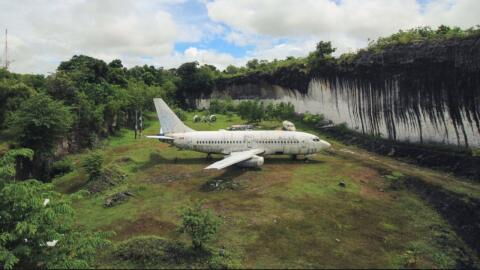How did it get there? How did a humpback whale get entangled in the Amazonian mangroves so far from the shore and the waters it usually swims in? Biologists are having a hard time answering these questions after discovering the carcass of the cetacean on the edge of the Amazon rainforest.
Discover our latest podcast
It is 26 feet long. Despite its imposing size, it is not because of its size that the deceased animal was spotted, but because of the swarm of vultures circling in the air above the carcass, stranded at the mouth of the Amazon River. Alerted by videos posted on social media, ten biologists from the Bicho D’água Institute NGO then decided to go on location to try to clarify the mystery surrounding this strange discovery.
Multiple mysteries
The cetacean being stranded is strange in many ways. Because of its location: the humpback whale was discovered about fifty feet from the shore, on the coastal island of Marajó in Brazil. Free from any trace of injury, the carcass of the animal presents few clues about its cause of death.
‘We are still unsure of how it ended up here, but we assume the creature was floating close to the shore and the tide, which was very high in recent days, carried it inland, into the mangroves,’ suggests the marine specialist Renata Emin in an interview given to the Brazilian news website O Liberal - and taken up by Newsweek.
Another mystery surrounding the death of the animal: the season in which it came to be stranded on the Brazilian shoreline, completely out of step with the habitual migration rhythm of its species, as underlined by the Brazilian specialist:
‘We are perplexed about the presence of a humpback whale on the Brazilian coast in February, because it is a very unusual fact.’ Humpback whales are used to frequenting the waters of the Amazon Basin during the winter. A season that, in Brazil, runs from June to September.
Two main hypotheses
To shed light on the mysteries surrounding this suspicious death, the scientists put forward two hypotheses. The first is based on the size of the animal. It is certainly imposing, but not as much as an adult humpback whale. Its 26 feet indeed suggest that it is a calf which is less than a year old, half as big as an adult.
Its young age could have been the cause of death. An accident could have led it away from its mother during the migration, and the calf could have gotten entangled in the thick Brazilian mangrove, unable to withstand the tidal currents.
But another explanation is possible, one that is less ‘natural:’ that of a poisoning by ingestion of plastic material. A plague that today invades all the oceans of the world, and which has already been revealed as the cause of death of many cetaceans.
To explore this trail, biologists decided to perform an autopsy on the animal. This is the final stage of their investigation, the results of which should not be known for about ten days. A little patience will be needed before we can - perhaps - answer the questions surrounding the sad death of this animal.
Take a look at the video above to see the extraordinary images of the whale in the Amazon for yourself...















